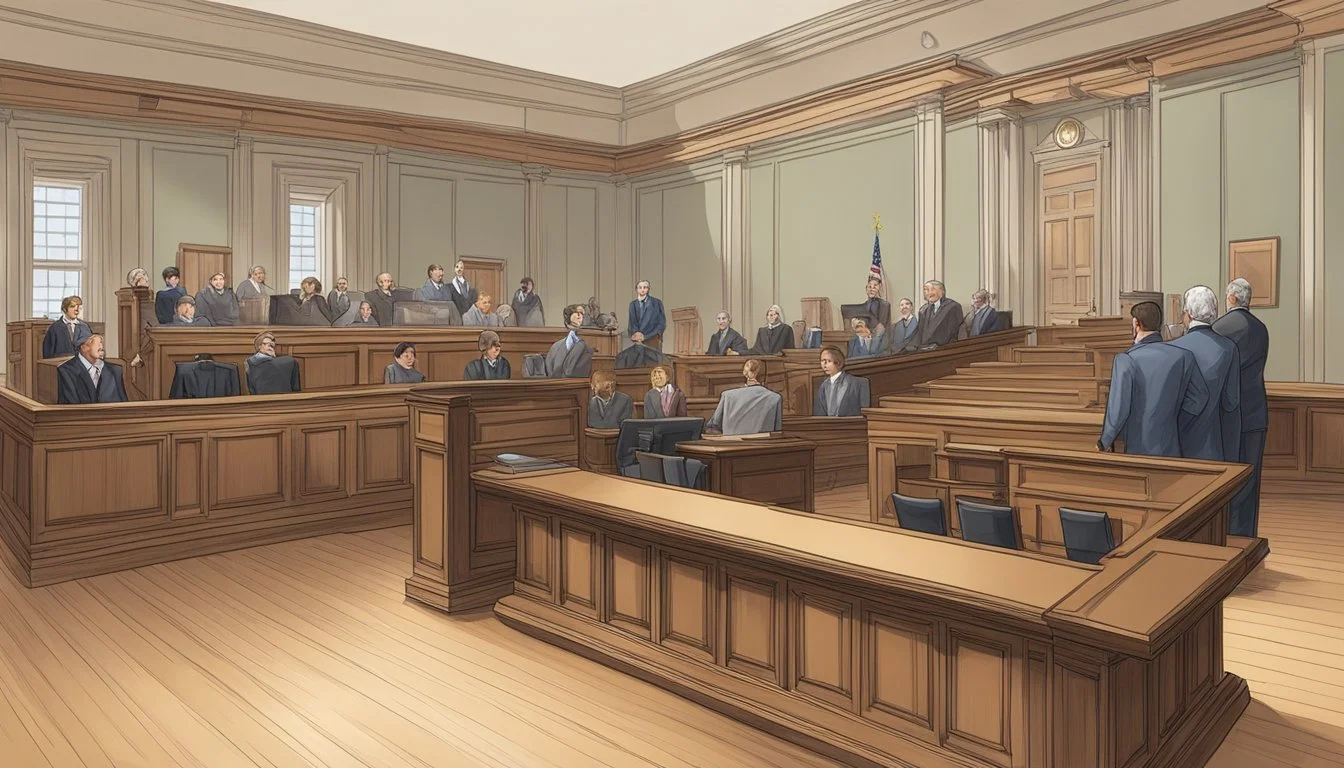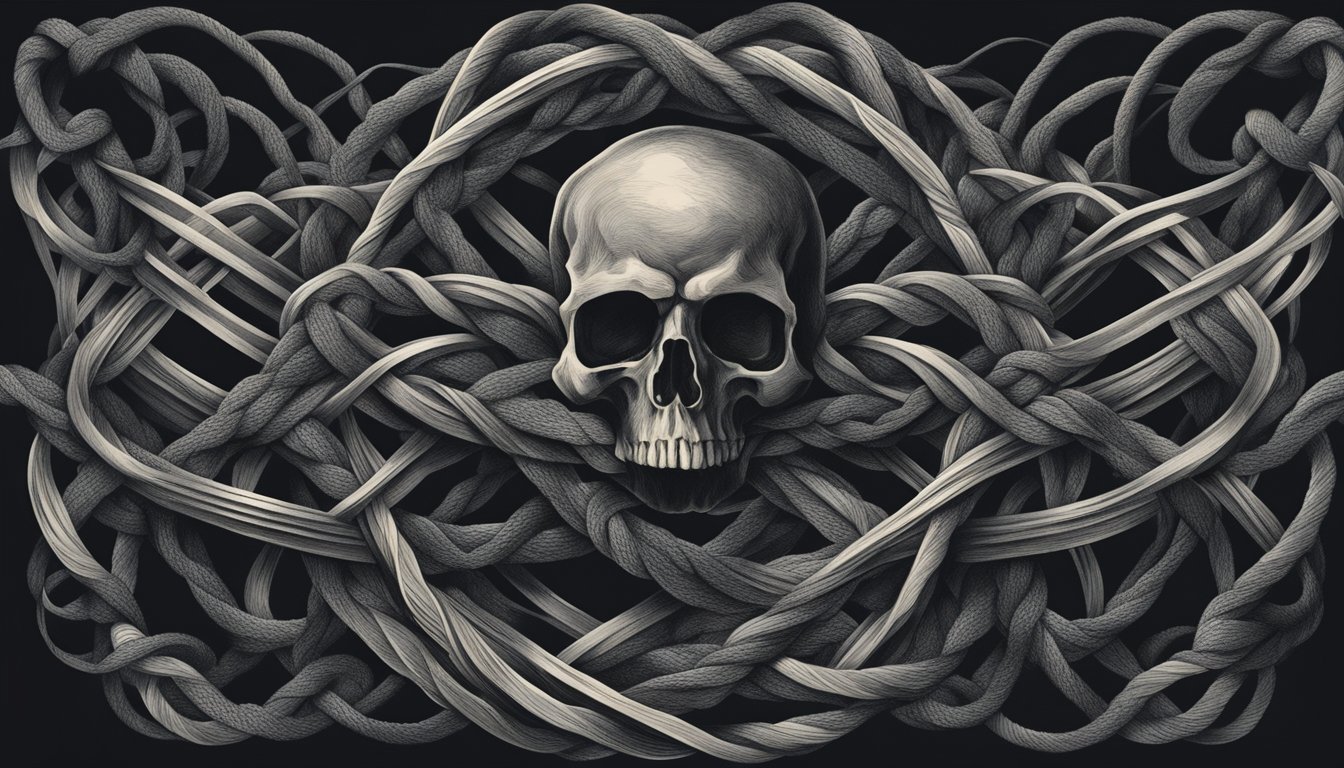The Final Knot: Anthony Allen Shore's Deadly Obsession
Serial Killer's Twisted Legacy
Anthony Allen Shore, known as the "Tourniquet Killer," left a trail of terror across Houston, Texas in the 1980s and 1990s. His brutal methods and the psychological trauma he inflicted on his victims captivated the public's attention for years. Shore's reign of violence came to an end in 2004 when DNA evidence linked him to multiple murders, leading to his arrest and eventual execution in 2018.
Shore's modus operandi involved using ligatures to strangle his victims, earning him his chilling moniker. His crimes spanned over a decade, claiming the lives of one woman and three young girls. The brutality of his actions shocked even seasoned investigators and left an indelible mark on the Houston community.
The case of Anthony Allen Shore serves as a stark reminder of the dangers that can lurk within seemingly ordinary individuals. His capture and subsequent trial brought closure to several grieving families and highlighted the importance of advances in forensic technology in solving cold cases.
The Life of Anthony Allen Shore
Anthony Allen Shore was born on June 25, 1962. He grew up in Houston, Texas, where he would later commit his heinous crimes.
Shore's childhood was marked by troubling behavior. He exhibited early signs of violence, including harming animals and his own sister.
In 1983, Shore married Gina Lynn Worley. The couple had two daughters before divorcing in 1997. That same year, Shore was arrested for molesting his children.
Shore worked various jobs, including as a tow truck driver. This occupation allowed him to move freely around Houston, facilitating his criminal activities.
His crimes began in 1986 and continued until 2000. Shore became known as the "Tourniquet Killer" due to his method of strangling victims with a ligature.
In 1998, Shore became a registered sex offender following his arrest for child molestation. Despite this, he continued to evade capture for his murders.
Shore's final victim was found in 1992 at a Houston Dairy Queen drive-thru. This crime would eventually lead to his capture and conviction.
Experts later suggested Shore may have suffered brain damage, potentially contributing to his violent tendencies. However, this did not excuse his actions in the eyes of the law.
The Tragic Victims
Anthony Allen Shore's reign of terror claimed the lives of four innocent females in the Houston area. Each victim's story represents a life cut tragically short and a family left devastated by senseless violence.
Maria Del Carmen Estrada
Maria Del Carmen Estrada, 21, became Shore's first known murder victim in 1992. The young woman's body was discovered in the drive-thru lane of a Houston Dairy Queen.
Shore strangled Estrada with a tourniquet made from a toothbrush and cord. This signature method earned him the moniker "Tourniquet Killer."
Estrada's murder went unsolved for over a decade until DNA evidence finally linked Shore to the crime in 2003.
Laurie Tremblay
Laurie Tremblay, 15, fell victim to Shore in 1986. Her body was found near a Houston restaurant where she worked.
Shore confessed to Tremblay's murder after his arrest in 2003. He admitted to strangling the teenager with a cord.
Tremblay's case had gone cold for 17 years before Shore's confession brought closure to her family.
Diana Rebollar
Diana Rebollar, 9, became Shore's youngest victim in 1994. The child disappeared while walking to a neighborhood grocery store.
Shore abducted, sexually assaulted, and strangled Rebollar. He dumped her body in an abandoned building.
Rebollar's murder remained unsolved until Shore's DNA was matched to evidence from the crime scene in 2003.
Dana Sanchez
Dana Sanchez, 16, was Shore's final murder victim in 1995. The teenager vanished after leaving home to visit her boyfriend.
Shore picked up Sanchez while she was hitchhiking. He sexually assaulted and strangled her before abandoning her body.
Sanchez's remains were discovered a week after her disappearance. Shore confessed to her murder following his 2003 arrest.
Chronology of Crimes
Anthony Allen Shore's murderous spree spanned from 1986 to 2000, claiming the lives of one woman and three girls. His brutal methods and the gaps between killings created a chilling pattern.
The 1992 Killing
Shore's most notorious crime occurred in 1992. He murdered 21-year-old Maria del Carmen Estrada, strangling her with a tourniquet made from a toothbrush and cord. Her body was found in a Houston Dairy Queen drive-thru.
This killing solidified Shore's modus operandi and earned him the moniker "Tourniquet Killer." The crime scene photos revealed the brutal nature of his attack, shocking investigators and the public alike.
Subsequent Slayings
Shore's other victims included 14-year-old Laurie Tremblay in 1986, 9-year-old Diana Rebollar in 1994, and 16-year-old Dana Sanchez in 1995. Each murder followed a similar pattern of strangulation using a makeshift tourniquet.
Between killings, Shore continued to live a seemingly normal life. He worked as a telephone lineman and tow truck driver. However, he was also a registered sex offender, hinting at his darker nature.
The long gaps between murders made it challenging for investigators to connect the crimes initially. It wasn't until DNA evidence linked Shore to multiple victims that the full extent of his crimes became clear.
Investigation and Evidence
The investigation into Anthony Allen Shore's crimes relied heavily on forensic evidence and breakthroughs at crime scenes. DNA analysis and careful examination of physical evidence ultimately led to his capture and conviction.
DNA Sample Analysis
DNA technology played a crucial role in linking Shore to multiple murders. Investigators collected DNA samples from crime scenes and preserved them for future analysis. As DNA testing advanced, these samples were re-examined using newer techniques.
In 2000, Shore was arrested for molesting his daughters. This required him to provide a DNA sample for the sex offender database. When his DNA was entered into the system, it matched evidence from several unsolved murders.
This DNA match provided a vital breakthrough, connecting Shore to crimes committed years earlier. It gave investigators solid evidence to pursue charges against him for multiple homicides.
Crime Scene Breakthroughs
Careful examination of crime scenes yielded important clues. Investigators found distinctive ligature marks on victims' necks, indicating the use of a tourniquet-like device. This unique method of strangulation became Shore's signature.
Crime scene photos revealed other key details:
Positioning of bodies
Items left behind by the killer
Signs of struggle
Fibers and trace evidence collected at scenes were analyzed and preserved. Though not immediately useful, this evidence later corroborated DNA findings when Shore was identified as a suspect.
The discovery of one victim's body in a Dairy Queen drive-thru provided additional leads. Investigators canvassed the area and reviewed security footage, gathering information that would prove valuable once Shore became a suspect.
Legal Proceedings
Anthony Allen Shore faced a complex legal journey following his arrest. The prosecution pursued capital punishment while the defense fought to spare his life through various legal avenues.
Harris County District Attorney's Role
The Harris County District Attorney's office aggressively prosecuted Shore. They presented compelling DNA evidence linking him to multiple murders. Prosecutors highlighted Shore's violent history and the brutal nature of his crimes.
The DA's team called expert witnesses to testify about Shore's sadistic tendencies. They also brought forward family members of victims to provide impact statements. This strategy aimed to secure a death sentence.
Appeals and Clemency Petition
Shore's defense team filed several appeals after his conviction. They challenged the admissibility of certain evidence and alleged ineffective counsel. The appeals court rejected these claims, upholding the original verdict.
A clemency petition was submitted to the Texas Board of Pardons and Paroles. It cited Shore's abusive childhood and claimed brain damage affected his actions. The board unanimously denied the petition.
Shore's lawyers took the case to the U.S. Supreme Court. They sought a stay of execution, arguing Shore was not mentally fit for capital punishment. The Court declined to intervene, allowing the execution to proceed.
Path to the Death Penalty
Anthony Allen Shore's crimes led to his conviction and placement on death row in Texas. His case progressed through the legal system, culminating in his execution by lethal injection.
Sentencing
Shore received the death penalty for the 1992 murder of Maria del Carmen Estrada. The jury deliberated for less than an hour before reaching their decision. Shore's confession to multiple murders and sexual assaults heavily influenced the sentencing outcome.
The court considered his violent criminal history and the brutal nature of his crimes as aggravating factors. Shore's attorneys attempted to present mitigating evidence related to his troubled childhood and brain damage, but this did not sway the jury's decision.
Before Execution
Shore spent 13 years on death row before his execution date was set. He exhausted his appeals, with courts rejecting claims of ineffective counsel and intellectual disability.
In the days leading up to his execution, Shore met with family members and spiritual advisors. He declined a last meal, a common practice for Texas death row inmates.
Shore was transferred to the Huntsville Unit, where executions take place. Prison staff prepared the lethal injection drugs, typically pentobarbital. The execution chamber was readied, including the gurney where Shore would spend his final moments.
Tourniquet Killer's Methods
Anthony Allen Shore earned his chilling moniker "Tourniquet Killer" due to his distinctive murder technique. He utilized everyday items to create makeshift garrotes for strangling his victims.
Shore's preferred method involved using a ligature, often fashioned from cord or rope. He would tighten it around the victim's neck using a toothbrush or bamboo stick as a handle, allowing precise control over the pressure applied.
This brutal technique enabled Shore to prolong his victims' suffering, alternating between choking and releasing to extend their torment. The tourniquet method also minimized physical evidence left on the bodies.
Shore targeted women and young girls, stalking them before launching his attacks. He often sexually assaulted his victims before or after killing them, combining his violent urges with sexual gratification.
The killer's background as an electrician and tow truck driver provided him with knowledge of knots and ligatures, which he exploited in his crimes. This technical skill made his murders even more efficient and deadly.
Shore's crimes spanned from 1986 to 2000, claiming the lives of at least four victims in the Houston area. His meticulous methods and ability to evade capture for years highlighted the calculated nature of his killings.
Impact on Society
Anthony Allen Shore's crimes deeply affected Houston and beyond. His actions led to lasting changes in how communities view public safety and handle sex offender cases.
Victims' Memories
Maria del Carmen Estrada, Laurie Tremblay, Diana Rebollar, and Dana Sanchez lost their lives to Shore's brutality. Their families continue to grapple with the trauma of their losses. Community memorials and vigils honor these victims, ensuring they are not forgotten.
Shore's attacks also left survivors dealing with long-term psychological effects. Some spoke out to raise awareness about sexual violence. Their courage helped other victims come forward and seek support.
Legislation and Sex Offender Laws
Shore's case highlighted gaps in tracking registered sex offenders. Texas legislators responded by tightening requirements for sex offender registration and monitoring. The state expanded its DNA database to help solve cold cases.
Law enforcement agencies improved their methods for investigating serial killings. They now place greater emphasis on connecting similar crimes across jurisdictions.
Schools and parents became more vigilant about children's safety. Many communities implemented education programs on recognizing predatory behavior. The case serves as a sobering reminder of the need for continued efforts to protect vulnerable individuals from sexual predators.







